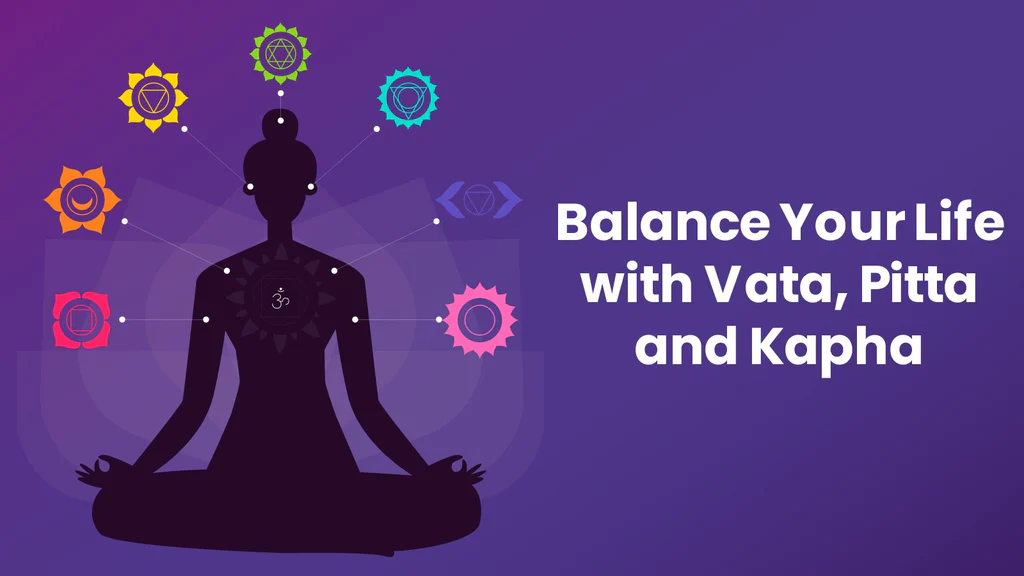The Three Ayurvedic Doshas: Vata, Pitta, and Kapha (Complete Guide)
Ayurveda, the ancient Indian system of holistic healing, sees health as a balance between mind, body, and spirit. One of the core concepts in Ayurveda is the idea of doshas—three fundamental energies that govern everything from how your body works to how you react to stress.
These three doshas are Vata, Pitta, and Kapha, and they each represent different elements of nature. Understanding your dosha type can help you make better choices about your diet, daily routine, exercise, and even emotional well-being.
Let’s take a closer look at each dosha, what they mean, and how they influence your overall health and lifestyle.

What Are Doshas in Ayurveda?
In simple terms, doshas are the building blocks of life in Ayurvedic philosophy. They’re made up of the five elements—earth, water, fire, air, and ether (space)—and are responsible for all physiological and psychological processes in the body.
Here’s how they break down:
- Vata = Air + Ether
- Pitta = Fire + Water
- Kapha = Earth + Water
Each person has all three doshas in their system, but usually, one or two are dominant. Your unique mix of doshas is called your prakriti—your natural constitution. When your doshas are in balance, you feel healthy, happy, and grounded. When they’re out of balance, you may experience physical or mental health issues.
Vata Dosha: The Energy of Movement
Elements: Air + Ether
Qualities: Light, dry, cold, irregular, quick, and mobile
Vata is the force behind movement—whether it’s your breath, heartbeat, thoughts, or circulation. It’s considered the most powerful of the three doshas because it governs all motion in the body.
When Vata is Balanced:
- You’re creative, enthusiastic, and quick-thinking
- You feel light and energetic
- Digestion and sleep are regular
When Vata is Out of Balance:
- You might feel anxious, scattered, or restless
- You could experience dry skin, constipation, or insomnia
- Weight loss, joint pain, and fatigue may show up
Tips to Balance Vata:
- Stick to a regular daily routine
- Eat warm, cooked, nourishing foods (like soups, stews, and root veggies)
- Avoid cold, raw, and dry foods
- Stay warm—physically and emotionally
- Practice calming exercises like yoga, stretching, or slow walks
Pitta Dosha: The Energy of Transformation

Elements: Fire + Water
Qualities: Hot, sharp, oily, intense, and focused
Pitta governs digestion, metabolism, and energy production. Think of it as the inner fire that powers your body and mind. Pitta types are often ambitious, driven, and passionate—but they can also burn out quickly if not balanced.
When Pitta is Balanced:
- You’re focused, intelligent, and energetic
- You have strong digestion and a healthy appetite
- Your skin glows and your body temperature feels steady
When Pitta is Out of Balance:
- You might feel irritable, impatient, or angry
- Issues like acid reflux, heartburn, inflammation, or skin rashes may arise
- You may feel overheated physically or emotionally
Tips to Balance Pitta:
- Eat cooling, fresh foods like cucumbers, leafy greens, and coconut
- Avoid spicy, oily, and fried foods
- Take breaks from work to cool your mind
- Practice calming hobbies or nature walks
- Keep yourself cool with herbal teas like mint or chamomile
Kapha Dosha: The Energy of Structure and Stability

Elements: Earth + Water
Qualities: Heavy, slow, steady, soft, cold, and moist
Kapha is the dosha that gives your body structure, strength, and stability. It governs your immune system, lubrication in your joints, and emotional calmness. People with dominant Kapha energy are often dependable, loving, and nurturing.
When Kapha is Balanced:
- You’re grounded, calm, and compassionate
- You have strong immunity and physical endurance
- You enjoy deep sleep and steady energy
When Kapha is Out of Balance:
- You might feel lethargic, sluggish, or depressed
- Weight gain, water retention, and allergies can occur
- You may lack motivation or feel stuck emotionally
Tips to Balance Kapha:
- Get moving with regular exercise and energetic activities
- Eat light, warm, and spicy foods
- Avoid heavy, fried, or dairy-heavy meals
- Try stimulating herbs like ginger, turmeric, and black pepper
- Create variety and excitement in your routine
How to Find Your Dominant Dosha

Most people aren’t purely one dosha. Instead, you’re likely a combination like Vata-Pitta or Pitta-Kapha, with one dosha being slightly more dominant. Ayurvedic practitioners use detailed questionnaires, physical observations, and personal interviews to determine your prakriti (natural constitution).
You can also take an online dosha quiz to get an idea, but for personalized guidance, seeing an Ayurvedic expert is always best.
Why Balancing Doshas Matters
When your doshas are in balance, your body works in harmony:
- Energy levels are steady
- Digestion is smooth
- Sleep is restful
- Emotions feel stable
- Immunity stays strong
When they’re off? That’s when issues start popping up—digestive trouble, emotional ups and downs, skin flare-ups, fatigue, and more.
Ayurveda teaches that prevention is better than cure. Listening to your body, adjusting your diet and habits seasonally, and practicing self-awareness all help keep your doshas in sync.
Table of Contents
FAQs About Vata, Pitta, and Kapha
Q1: Can I be a mix of all three doshas?
A: Yes! This is called a tridoshic constitution. It means you have a relatively equal balance of all three doshas. Tridoshic people can often adapt easily, but when imbalances happen, they might feel symptoms across all three doshas.
Q2: Do doshas change over time?
A: Your original constitution (prakriti) doesn’t change, but your current state (vikriti) can shift based on lifestyle, diet, stress, environment, and seasons. So, you may be born primarily Vata but temporarily experience Pitta imbalance due to work stress or hot weather.
Q3: What’s the best diet for each dosha?
- Vata: Warm, moist, grounding foods like soups, oats, root veggies
- Pitta: Cooling, fresh, less spicy foods like cucumbers, melons, leafy greens
- Kapha: Light, spicy, dry foods like lentils, steamed veggies, ginger tea
Q4: Is exercise recommended for all doshas?
A: Yes, but the type matters:
- Vata: Gentle yoga, walking, tai chi
- Pitta: Moderate exercises like swimming, cycling, or calming yoga
- Kapha: Energizing workouts like HIIT, running, or dance
Q5: Can Ayurvedic dosha balancing help with modern health issues?
A: Definitely. Many chronic issues—like stress, insomnia, digestive problems, or mood swings—can be eased by bringing doshas back into balance. Ayurveda takes a whole-body approach, so it looks at root causes, not just symptoms.
Final Thoughts: Know Your Dosha, Know Yourself
Understanding the three Ayurvedic doshas—Vata, Pitta, and Kapha—is like getting a roadmap to your body, mind, and emotions. It helps you understand why you thrive in some environments but struggle in others, why certain foods energize you while others make you sluggish, and even why your moods shift the way they do.
By tuning into your dosha, you can make smarter decisions about how you eat, move, rest, and live. You’ll learn to recognize when things are off—and how to bring them back into balance naturally.
Ayurveda isn’t about quick fixes or rigid rules. It’s about awareness, prevention, and personal harmony. Once you start living in tune with your dosha, you might be surprised how quickly your body starts to feel more energized, your mind becomes calmer, and your life starts flowing a little more smoothly.
